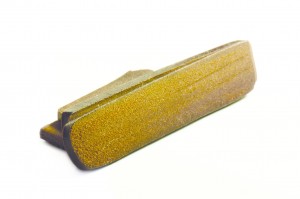 Modern hash is classified as solvent, solvent-free or solventless extracts. Solvent extracts, like butane hash oil, are processed using a hydrocarbon solvent such as butane, propane or hexane to dissolve the active ingredients and separate them from the plant material. Solvent-free products are initially extracted using a solvent, but then they’re distilled in a lab apparatus to remove trace solvent residue. Solventless extracts are achieved by mechanically separating products without the use of any solvents.
Modern hash is classified as solvent, solvent-free or solventless extracts. Solvent extracts, like butane hash oil, are processed using a hydrocarbon solvent such as butane, propane or hexane to dissolve the active ingredients and separate them from the plant material. Solvent-free products are initially extracted using a solvent, but then they’re distilled in a lab apparatus to remove trace solvent residue. Solventless extracts are achieved by mechanically separating products without the use of any solvents.
Water is referred to as the universal solvent because many things will dissolve into it; however, when it is employed in the ice water extraction method commonly known as bubble hash, there is no point where the resin heads dissolve in water. The water simply acts as a medium, creating the physical reactions necessary for the waxy stalk to become brittle. This aids in the separation of the trichome gland heads, which sink, from the plant material, which floats. So even though solventless extracts are referred to as such, they are actually solventless separations.
Traditional solventless hash has been produced for thousands of years by various cultures using various methods. One method of making the traditional black bricks of resin hash is drying plants in full sunlight, laying the plant material out over silk screens, then covering it with canvas and ceremoniously beating it with sticks to separate the trichomes for collection. Countries that produce large amounts of hash using this method include Morocco, Lebanon, Pakistan, India and Afghanistan.
Another ancient method of concentrating cannabis is hand-rubbing live cannabis plants, then hand-rolling hash resin balls, which are called charas. This is the typical preparation used in a chillum by the Sadhu monks in northern India for religious practices.
Many patients today across the US are more familiar with the solvent-based extractions that currently saturate the market. Those in the know, however, tend to seek time-tested and historical methods of production. There are many hash connoisseurs who view solventless as the preferred method of extraction when it comes to their medicine. However, the best form of hash is very much in the eye of the beholder. From today’s greasy budders, clear shatters and terpy crumbles, to the old world style of hash, everyone has a preference.

